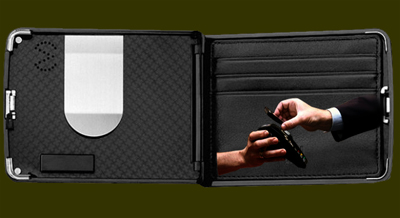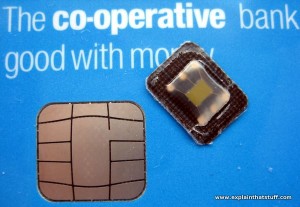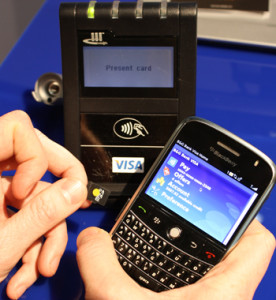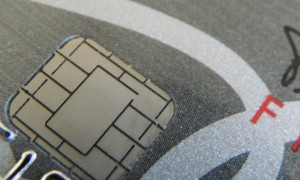Category: Digital Wallet Privacy
February 11th, 2023 by Admin
 Citigroup, U.S. Bancorp and members of The Clearing House address negativity surrounding data security concerns with digital or electronic payments. A new system launched by the banks called Secure Cloud will add a layer of protection for mobile wallets. Mobile wallet providers such as banks, credit card providers and even non-bank providers such as Google Wallet and ISIS. Paul Galant, head of enterprise payments at Citigroup says “We want to see this type of innovation [digital payments] continue, and it needs to be built on a foundation that’s sustainable. In this era of cyberattacks, fraud and data breaches, the banking industry really can do a lot better.”
Citigroup, U.S. Bancorp and members of The Clearing House address negativity surrounding data security concerns with digital or electronic payments. A new system launched by the banks called Secure Cloud will add a layer of protection for mobile wallets. Mobile wallet providers such as banks, credit card providers and even non-bank providers such as Google Wallet and ISIS. Paul Galant, head of enterprise payments at Citigroup says “We want to see this type of innovation [digital payments] continue, and it needs to be built on a foundation that’s sustainable. In this era of cyberattacks, fraud and data breaches, the banking industry really can do a lot better.”
Secure Cloud which The Clearing House will begin testing later this year is designed to keep cardholders credit and debit card data from leaking into less secure and private databases operated by technology vendors and e-commerce merchants. Digital wallets make a smartphone or tablet device replace traditional physical wallets and allow cardholders to wave their smart phone or tablet near digital readers to complete an electronic payment at the point of sale, rather than swiping credit cards. Secure Cloud seeks to replace the credit card information in a phone or tablet’s wallet with a ‘token’. Tokenized data is a scrambled sequence of characters that can be used to satisfy an electronic payment shielding the credit card holder from 3rd party or merchant account data gathering. The mobile wallet uses the token instead of credit card data at the point of a digital transaction. Banks will then match the token from the electronic wallet to the actual credit card account leaving the merchant none the wiser. By not saving the credit card data onto the phone or tablet, security and privacy increases.
In the world of digital payment processing, thieves have targeted merchant accounts that store credit card and personal information rather than targeting the more secure banking defenses. As mobile payments proliferate, and payment systems evolve, we have a new opportunity to make our digital transactions more secure. The Clearing House plans to run tests in the fourth quarter of 2013 into next summer. US Bancorp will handle the merchant account end of electronic transaction through their Elavon acquiring unit. Although initial testing will involve smartphones and tablets equipped with Near Field Communications or NFC that provides tap to pay or wave to pay technology, Secure Cloud could eventually migrate to e-commerce and m-commerce mobile commerce payment systems.
Secure Cloud hopes to establish Open Standards available to banking and non-banking entities such as Google’s Wallet services. This will allow any digital wallet provider to adopt the standard and even build on it to ease the transition to mobile payment processing. Security and convenience are at the heart of the digital payment landscape and Secure Cloud hopes to provide the security end both to banks and mobile wallet users.
Posted in Digital Wallet Privacy Tagged with: Digital Wallet Privacy, fraud and data breaches, Google's Wallet services, mobile commerce payment, Stronger Security

February 9th, 2022 by Admin
John Stewart
January 17, 2022
https://www.digitaltransactions.net/trends-like-open-banking-and-bnpl-will-sustain-e-commerces-hot-streak-a-report-says/
Open banking, single-click checkout wallets, and the hot buy now, pay later trend will all help drive e-commerce volume worldwide in the coming five years, predicts Juniper Research in a report released Monday. This momentum is likely to push online sales long after the short-term impetus from the pandemic subsides, Juniper says.
E-commerce volume totaled $4.9 trillion globally in 2021, a figure the United Kingdom-based research firm forecasts will reach $7.5 trillion in 2026, when China will control a 37% share. Wider availability of multiple e-commerce channels, including mobile devices, will propel the overall growth worldwide, Juniper says. But along with the boom in e-commerce will come a corresponding growth in fraud via identity theft, account takeovers, and fraudulent chargebacks, the report warns. China, for example, will account for more than 40% of fraud losses worldwide in 2025, at more than $12 billion, Juniper forecasts.
Open banking is a trend by which fintechs can verify balances in consumers’ accounts and transfer funds to pay for online purchases. As standards bodies work to promulgate standards for this business, e-commerce payment providers “should … partner with specialists in … specific emerging payment areas to keep pace with changing merchant expectations around acceptance types,” the research firm says in its release, referring to digital wallets and crypto as well as open banking.
Open banking has taken on a higher profile in the global payments market with efforts by both of the global card networks to acquire firms that specialize in this area. Visa Inc. has acquired Tink AB, while Mastercard Inc. bought Aiia and Finicity Corp.
Physical goods will continue to dominate e-commerce spending, the report says, accounting for 82% of payment value by 2026. To tap into the trend, Juniper advises, payments providers should support buy now, pay later plans, which allow consumers to split purchases into four equal installments paid over a six-week period at no interest. BNPL is becoming more controversial, however, as the Consumer Financial Protection Bureau has launched an investigation of the option and as reports emerge that consumers with multiple accounts are more likely to miss a payment.
While still a big trend, e-commerce sales in the U.S. market cooled significantly last year as the pandemic effect lost some of its force. Third-quarter sales in 2021 reached $214.6 billion, up 6.6% year-over-year, according to the Census Bureau, which tracks retail sales. That follows an 8.9% rise in the second quarter and three straight quarters with increases of 32% or more. Fourth-quarter 2021 results are not yet available.
Posted in Credit card Processing, Credit Card Reader Terminal, Credit Card Security, Digital Wallet Privacy, e-commerce & m-commerce, Financial Services, Mail Order Telephone Order, Merchant Account Services News Articles, Merchant Services Account, Mobile Payments, Mobile Point of Sale, Point of Sale, Small Business Improvement, Smartphone, Uncategorized, Visa MasterCard American Express Tagged with: banking and e-commerce, e-commerce, e-commerce businesses, e-commerce merchants, e-commerce processor, e-commerce transactions, ecommerce, ecommerce merchant, ecommerce merchants, ecommerce sites, mobile commerce payment, mobile payment, Mobile Payments, mobile processing transactions, mobile transactions, mobile wallet, mobile wallet transactions, mobile wallets, mobile-commerce payments, online transactions, point-of-sale transactions, transaction processing, transactions, wallet

September 10th, 2020 by Admin
There are few moments like now where American consumers are collectively open to the idea of new payment methods – especially contactless ones such as mobile wallets. This is good news for businesses since mobile wallets offer a safer payment alternative to credit cards and drastically reduce customer wait times at checkout.
Mobile wallets (such as Apple Pay and PayPal) use authentication, monitoring and data encryption to secure and transmit personal information, and the level of security associated with them has payment card issuers backing their use. This is certainly helping drive consumer adoption, as does convenience.
In fact, global mobile wallet transaction value is estimated to reach nearly $14 trillion by 20201 – and that is a pre-COVID-19 estimate. New estimates are higher and point to further rapid adoption given the current need for touch-free payment options. According to a recently published Visa Back to Business report,* 70 percent of consumers surveyed in June 2020 have used a new shopping or payment method for the first time this year.
A rapid shift has begun and the numbers tell the storySo what is holding back business adoption of mobile wallets? Until recently, it just wasn’t a priority for many small- and medium-size businesses to enable it or educate their employees on its use. The lack of preferential demand didn’t make it a pressing topic. But that is changing. Consider this:
- According to Forbes,2 by 2026, digital natives will be 59 percent of the consumers in the U.S. market.
- Of this, 45 percent will be specifically Millennials and Gen Z, representing the largest purchasing power.
- As Gen Z move into becoming the largest generation cohort, their purchasing power will be $143 billion.
But it’s not just what lies ahead that SMBs should be focused on now.
According to Visa’s Back to Business report, shoppers are now putting COVID-19 safety measures at the top of their shopping lists and they will reward stores that do the same. In fact, if all other factors were equal (price, selection, location), nearly 63 percent of consumers surveyed would switch to a new store that installed contactless payment options, such as mobile wallets.3
What does this mean for you? Now is the time to connect with customers to make sure they are fully contactless capable and have the technology in place to accept many of the most popular mobile wallets.
1Payments Industry Intelligence, “The rise of digital and mobile wallet: Global usage statistics from 2018,” November 25, 2018.
2Forbes, January 2020
3Visa Back to Business report 2020
Posted in Digital Wallet Privacy, e-commerce & m-commerce, Electronic Payments, Internet Payment Gateway, Mobile Payments, Uncategorized Tagged with: business, digital payment, digital payments, Digital Wallet, Digital wallets, mobile, mobile commerce, Mobile Devices, mobile payment, Mobile Payments, mobile wallet, mobile wallets, payment, payments
May 6th, 2014 by Elma Jane
MasterPass in-app payments is this latest offering from MasterCard to address the specific needs of the digital ecosystem. With MasterPass in-app payments, MasterCard is creating great experiences for consumers across all channels and all devices, and enabling merchants to reach new consumers in ways not possible in the pre-digital world.
MasterPass an in-app payments enabling consumers to make secure purchases within a mobile app has been announced by Mastercard. MasterPass in-app payments eliminate the need to store payment card credentials across numerous mobile apps, providing consumers with a fast and simple payment experience.
MasterCard is also developing a framework to make all payments using MasterPass as or more secure than anything, ensuring that consumers can benefit from the highest possible levels of security.
MasterPass in-app payments extend the capabilities of the current browser-based MasterPass digital service into the mobile app environment, and provide consumers with one secure direct relationship with their bank. Apps with MasterPass embedded in them enable consumers to complete a purchase with as few as one click or touch on their favorite connected device without leaving the app environment. MasterPass in-app payments will be made available to developers and merchants beginning in Q2 of this year.
Posted in Best Practices for Merchants, Digital Wallet Privacy, EMV EuroPay MasterCard Visa, Financial Services, Mobile Payments, Payment Card Industry PCI Security, Smartphone, Visa MasterCard American Express Tagged with: card credentials, consumers, digital service, in-app payments, MasterCard, MasterPass in-app payments, Merchant's, mobile app, payments, pre-digital, Security
May 6th, 2014 by Elma Jane
Boston-based Loop has released its LoopWallet app for storing magnetic-stripe cards on smartphones and using them in contactless payments at regular POS terminals.
Loop is a Level One PCI certified payment provider. Its technology has applications for turning loyalty cards into contactless cards and can also be used to generate dynamic card data every time a payment is made, preventing the creation of cloned cards.
The Loop Fob contains a microprocessor and magnetic induction loop and can be used without a phone, in which case payment would be taken from a designated card.
Mag-stripe cards for payment, gift, loyalty, ID or membership are read by the Loop Fob, a small audio jack magnetic-stripe reader, and then card data is encrypted and stored on the user’s smartphone. The LoopWallet app allows users to view their cards and select the one they wish to use.
To make a payment at the point of sale, the phone sends a signal, using Loop’s Magnetic Secure Transmission technology. MST emulates the signal generated when a mag-stripe card is swiped across a POS terminal’s read head. The signal is received by any mag-stripe card reader without requiring modifications to the POS terminal or processing system.
The free LoopWallet App for iOS 7 is available in the Apple App Store, with an Android version planned for release in April 2014. The app is only available to U.S. consumers.
.
Posted in Best Practices for Merchants, Credit card Processing, Digital Wallet Privacy, Electronic Payments, EMV EuroPay MasterCard Visa Tagged with: contactless, mag-stripe readers, magnetic stripe, mobile wallet, PCI
April 15th, 2014 by Elma Jane
Amsterdam, Netherlands-based Cardis has been piloting its technology in Europe with Raiffeisen Bank in Austria and Sberbank in Russia. They are now focused on the U.S., as this is the fastest growing mobile payments market in the world, where there’s a huge opportunity. Integration of technology with a large U.S. processor and with a major U.S. retail brand, which will be launching a mobile site and mobile app using Cardis solution.
Cardis International is planning an April launch in the U.S. for its technology, which enables merchants to accept low-value contactless or mobile payments without incurring high processing charges. Cardis is able to bring down the processing cost of low-value payments, the company said, by aggregating multiple transactions into a single payment.
The problem
Contactless card and NFC-based mobile payments are typically for low amounts, and yet still use a card processing infrastructure that was designed 40 years ago when the average credit card transaction was $100.
Traditional card processing systems require each transaction to be individually processed through the payment system, including authorization, clearing and settlement. The resulting variable costs of processing each transaction are independent of the transaction amount and too high for low-value payments, particularly in low-margin industries such as quick-service restaurants. QSR restaurants often have a 3 percent profit margin, yet, for low-value contactless payments, the processing cost could be as high as 6-7 percent of the transaction value.
Mobile and contactless cards offer consumers a convenient form factor. But they don’t solve the problem that low-value card payments are very expensive for merchants.
As an ever-increasing percentage of transactions have become cashless, card processing fees have become a significant cost. Costs that are based on the number of transactions, rather than their value. With average per person expenditures of $5 or under, feels each swipe fee much more than a business where customers spend $50 or more. But not accepting credit/debit cards for low-value transactions isn’t an option as many of customers don’t carry cash anymore.
Aggregation
Cardis’ solution is to act as an aggregator of low-value payments, sending a single batched transaction through to a processor instead of multiple low-value transactions. As there is no per transaction processing of individual low-value purchases, the cost-per-transaction is significantly reduced.
Cardis provides its technology as a software plug-in to payment service providers for contact-based and contactless card payments, mobile wallet transactions and NFC payments.
There are two models. For card payments, it will aggregate multiple purchases by an individual cardholder at a single merchant on a post-paid basis up to a specific amount, for example $20. To guarantee payment to the merchant, since the aggregated transaction is processed at a later date, it will pre-authorize an amount, for example $15, the first time the customer makes a purchase at that merchant.
Alternatively, merchants can opt for Cardis’ prepaid system. This involves the consumer setting up a prepaid account hosted by Cardis’ sponsoring bank that is topped up via ACH (automated clearing house) transfers. Using the Cardis prepaid account on a smartphone provides the digital equivalent to cash.
With its post-paid solution, merchants will save 30-50 percent per transaction compared to conventional card processing fees, while its prepaid solution saves merchants 80 percent per transaction. With the post-paid solution, it will only aggregate a customer’s purchases at a single specific merchant. But, as the prepaid solution aggregates the customer’s purchases across multiple merchants, this enables to offer a much lower processing fee to the merchant.
Cardis provides an audit trail enabling consumers to track individual transactions that are aggregated using its technology. Consumers don’t lose any of their card protection rights and guarantees by agreeing to let a merchant aggregate their payments through Cardis. They can always charge back any disputed transactions.
Cardis sees opportunities for digital content providers such as online music stores and games providers to use its aggregation technology. It can integrate solution with existing digital wallets.
Raiffeisen
In 2012, Austria’s Raiffeisen Bank launched a pilot of Cardis technology for NFC-based Visa V Pay debit card payments in partnership with Visa Europe. Raiffeisen’s MobileCard mobile payment product uses a secure element stored on an NFC-enabled MicroSD card inserted in a mobile phone. Although Cardis supports secure elements stored on SIM cards as well as on MicroSD cards and on the cloud, Raiffeisen opted for MicroSD cards, as this is an easier solution to implement.
Raiffeisen cardholders participating in the pilot use MobileCard on average three times a week, with an average transaction value of ($5.70). Merchants accepting MobileCard are seeing 40 percent to 70 percent lower merchant processing fees for an average transaction value of ($5.43) to ($13.60).
Spindle
In October 2013, Spindle, a U.S. mobile commerce company, signed an agreement with Multi-max, a manufacturer of vending machines for mid-size and small offices throughout North America, Europe and Asia. Spindle will integrate its MeNetwork mobile commerce technology into Multi-max’s line of K-Cup vending machines for rollout across the U.S.
The MeNetwork solution will incorporate all card-based payment acceptance services, as well as mobile marketing services. Spindle’s partner Cardis will provide low-value payment processing services for purchases at K-Cup vending machines.
Posted in Credit card Processing, Credit Card Security, Digital Wallet Privacy, e-commerce & m-commerce, Electronic Payments, Gift & Loyalty Card Processing, Internet Payment Gateway, Mobile Payments, Mobile Point of Sale, Near Field Communication, Payment Card Industry PCI Security, Smartphone, smartSD Cards, Visa MasterCard American Express Tagged with: accept, ach, aggregated, aggregation, aggregator, authorization, automated clearing house, average transaction, batched, card payments, card processing infrastructure, card processing systems, card-based payment acceptance, cardholders, clearing, contactless, contactless payments, cost-per-transaction, credit card transaction, debit card payments, Digital wallets, high processing charges, low-value payments, merchant aggregate, Merchant's, microSD, mobile app, mobile commerce, mobile payment, Mobile Payments, mobile site, mobile wallet transactions, nfc-based, payment service providers, pre-authorize, prepaid, processed, Processing, processing cost, processing fees, processor, settlement, smartphone, transactions, transfers
March 17th, 2014 by Elma Jane
Young people and Londoners are leading the way in adopting cashless payments in the U.K., The U.K.-based market research firm also found that non-bank electronic payment methods such as PayPal are trusted more than contactless and mobile card payments.
According to research, 38 percent of British people are interested in being able to make mobile payments and an enthusiastic 8 percent claim they would apply for mobile payment services straight away. Eighteen percent of U.K. Internet users say they would prefer to be able to stop using cash altogether.
Support for a cashless society is strongest in London, with 30 percent prepared to stop using cash. And it is the nation’s youth who are leading the way in new payment forms. Twenty-two percent of those aged 25 to 34 have used Barclays’ Pingit peer-to-peer mobile payment system, compared to 5 percent of those aged 45-54. About 17 percent of 25- to 34-year-olds have used the virtual currency Bitcoin at least once.
However, consumers are more concerned about the security of mobile payments than card payments. Sixty-five percent of consumers showed some concern about mobile payment security and 61 percent showed some concern about contactless cards, compared with 34 percent who were concerned about using debit cards and the 33 percent who were concerned about credit cards.
Consumers were notably less concerned about using non-bank payment services such as PayPal, which protect users’ financial data from being seen by third parties. Only 27 percent of Internet users are concerned about using non-bank payment services such as PayPal.
Posted in Credit card Processing, Credit Card Security, Digital Wallet Privacy, Electronic Payments, EMV EuroPay MasterCard Visa, Mobile Payments, Mobile Point of Sale, Near Field Communication, Smartphone Tagged with: card payments, cashless payments, cashless society, contactless, contactless cards, credit cards, debit cards, electronic payment methods, financial data, internet users, mobile card payments, mobile payment security, mobile payment services, non-bank, non-bank payment services, peer-to-peer mobile payment system, Security, Virtual Currency
March 14th, 2014 by Elma Jane
Merchant and Consumer Groups Seek Senate Support To Forego EMV Chip and Signature As Breach Concerns Rise
There’s no shortage of answers in trying to put a stop to hackers set on throwing chaos into the way consumers transact at the point of sale, or online for that matter. Yesterday, the Banking, Housing and Urban Affairs subcommittee on national security and international trade and finance got its chance to hear some of them.
During the hearing, William Noonan, deputy special agent in charge, U.S. Secret Service, noted the advances in computer technology and greater access to personally identifiable information online, which have created a virtual marketplace for transnational cyber criminals to share stolen information and criminal methodologies. As a result, the Secret Service has observed a marked increase in the quality, quantity, and complexity of cyber crimes targeting private industry and critical infrastructure. These crimes include network intrusions, hacking attacks, malicious software, and account takeovers leading to significant data breaches affecting every sector of the world economy.
The recently reported data breaches of Target and Neiman Marcus represent only the most recent, well-publicized examples of this decade-long trend of major data breaches perpetrated by cyber criminals intent on targeting the nation’s retailers and financial payment systems. The increasing level of collaboration among cyber-criminals allows them to compartmentalize their operations, greatly increasing the sophistication of their criminal endeavors and allowing for development of expert specialization. These specialties raise both the complexity of investigating these cases, as well as the level of potential harm to companies and individuals.
So how should the industry react to prevent further breaches? Those opinions provided during testimony at the hearing varied widely, though both consumer and merchant groups would like the card networks to give up requiring only signatures for smart card purchases at the point of sale.
Consumer program director at the U.S. Public Interest Research Group, called for myriad of changes, citing that the greater risk from the recent breaches is less related to identity theft than it is to fraud on existing accounts, and he said it’s time for players on both sides of the transaction to focus more on protecting consumers than on managing their own risk.
Until now, both banks and merchants have looked at fraud and identity theft as a modest cost of doing business and have not protected the payment system well enough. They have failed to look seriously at harms to their customers from fraud and identity theft -including not just monetary losses and the hassles of restoring their good names, but also the emotional harm that they must face as they wonder whether future credit applications will be rejected due to the fraudulent accounts.
As a first step, Congress should institute the same fraud cap, $50, on debit/ATM cards that exists on credit cards, or eliminate the $50 cap entirely, since it is never imposed because of the zero-liability policies issuers have voluntarily have imposed. Congress also should provide debit and prepaid card customers with the stronger billing-dispute rights and rights to dispute payment for products that do not arrive or do not work as promised, just as many credit card users enjoy.
Congress should endorse a specific technology, such as EMV smart cards and if it does, require the use of PINs when initiating smart card transactions. The current pending U.S. rollout of chip cards will allow use of the less-secure chip-and-signature cards rather than the more-secure chip-and-PIN cards. Why not go to the higher-and-PIN authentication standard immediately and skip past chip and signature? There is still time to make this improvement.”
Retailers have spent billions of dollars on card-security measures and upgrades to comply with PCI card security requirements, but it hasn’t made them immune to data breaches and fraud. The card networks have made those decisions for merchants, and the increases in fraud demonstrate that their decisions have not been as effective as they should have been.
The card networks should forego chip and signature and go straight to chip and PIN. To do otherwise would mean that merchants would spend billions to install new card readers without they or their customers obtaining PINs’ fraud-reducing benefits. We would essentially be spending billions to combine a 1990’s technology chips with a 1960’s relic signature in the face of 21st century threats.
Posted in Best Practices for Merchants, Credit card Processing, Credit Card Reader Terminal, Credit Card Security, Digital Wallet Privacy, Electronic Payments, EMV EuroPay MasterCard Visa, Financial Services, Merchant Services Account, Payment Card Industry PCI Security, Point of Sale, Small Business Improvement, Visa MasterCard American Express Tagged with: banking, Breach, card networks, card-security, chip and signature, chip cards, chip-and-PIN cards, computer technology, credit applications, credit cards, critical infrastructure, cyber crimes, cyber-criminals, data breaches, debit atm cards, EMV, hackers, hacking attacks, international trade and finance, malicious software, managing risk, merchant, national security, netwrok intrusions, new card readers, online, payment system, pci card security requirements, PIN, point of sale, prepaid card customers, smart card transactions, technology chips, the secret service, transnational cyber criminals, virtual marketplace, world economy
March 3rd, 2014 by Elma Jane
A solution for mobile commerce will be needed eventually, whether you’re an ecommerce merchant or you run a brick-and-mortar shop.
There are mobile payment platforms for digital wallets, smartphone apps with card-reader attachments, and services that provide alternative billing options. Here is a list of mobile payment solutions.
Boku enables your customers to charge their purchases directly to their mobile bill using just their mobile number. No credit card information, bank accounts or registration required. The Boku payment option can be added to a website, mobile site, or app. Price: Contact Boku for pricing.
Intuit GoPayment is a mobile credit card processing app from Intuit. It accepts all credit cards and can record cash or check payments. Intuit GoPayment transactions sync with QuickBooks and Intuit point-of-sale products. Intuit GoPayment works with iOS and Android devices and provides a free reader. Price: $12.95 per month and 1.75 percent per swipe, or 2.75 percent per swipe and 3.75 per keyed transaction.
iPayment MobilePay is a mobile payment solution from Flagship Merchant Services and ROAMpay. The service accepts all major cards and can record cash transactions. To help build your customer database, the app completes customer address fields for published landlines. The app can handle taxes, tips, and can record transactions offline. You can use the service month-to-month. The app and the reader are free. Price: $7.95 per month; Each transaction costs $0.19 plus a swipe fee maximum of 1.58 percent, or a key fee between 1.36 and 2.56 percent.
ISIS mobile commerce platform enables brick-and-mortar stores to collect payments (via an NFC terminal) from the mobile devices of their customers. Provide your customers with a simplified checkout process through the contactless transmission of payments, offers, and loyalty integrated in one simple tap. Price: Isis does not charge for payment transactions in the Isis Mobile Wallet. Payment transaction fees will not be increased by working with Isis.
LevelUp is mobile payment system that uses QR codes on smartphones to process transactions. Use LevelUp with a scanner through your POS system, or use a standalone scanner with a mobile device. You can also enter the transaction through the LevelUp Merchant App, using your smartphone’s camera to read the customer’s QR Code and entering the amount to complete the transaction. LevelUp also provides tools to utilize customer data. Price: LevelUp charges a 2 percent per transaction fee. Scanner is $50; tablet is $200.
MCX is a mobile application in development by a group of large retail merchants. Details on the solution are vague, but MCX is intended to offer a customizable platform that will be available through virtually any smartphone. MCX’s owner-members include a list of merchants in the big-box, convenience, drug, fuel, grocery, quick- and full-service dining, specialty-retail, and travel categories. Price: To be determined.
mPowa is a mobile payment app to process credit and debit card transactions, and record cash and check sales. mPowa will soon launch its PowaPIN chip and PIN reader for the EMV (“Europay, MasterCard, and Visa”) card standard. (Developed in Europe, EMV utilizes a chip embedded in a credit card, rather than a magnetic strip.) The EMV standard is likely to gain footing to combat credit card fraud. mPowa is a good solution for merchants with a global presence. Price: 2.95 percent per transactions, or .25 percent or $0.40 per transaction when used as a current processor’s point-of-sale system.
PayAnywhere is a solution to accept payments from your smartphone or tablet with a reader. It features an automatic tax calculation based on your current location, discounts and tips, inventories with product images and data, and more. Bilingual for English and Spanish users. PayAnywhere provides a free credit card reader and free app, available for iOS and Android. Price: 2.69 percent per swipe, 3.49 percent plus $0.19 per keyed transaction.
PayPal Here gives you a variety of options for accepting payments, including credit cards, PayPal, check, record cash payments, or invoice. With PayPal Here, you can itemize sales totals, calculate tax, offer discounts, accept tips, and manage payment email notifications. Available for iOS and Android. The app and reader are free. Price: 2.75 percent per swipe and 3.5 percent plus $0.15 per manually-entered transaction.
Square is a simple approach to mobile credit card processing. Square provides a free point of sale app and a free credit card reader for iPhones and iPads. Square offers a selection of tools to track sales, taxes, top-purchasing customers, and more. Square’s pricing is on the higher end, but with no monthly fee Square may be a good fit if you have infrequent mobile transactions. Price: 2.75 percent per swipe and 3.5 percent plus $0.15 per manually-entered transaction.
Posted in Credit card Processing, Credit Card Reader Terminal, Credit Card Security, Digital Wallet Privacy, e-commerce & m-commerce, Electronic Check Services, Electronic Payments, EMV EuroPay MasterCard Visa, Financial Services, Internet Payment Gateway, Mail Order Telephone Order, Mobile Payments, Mobile Point of Sale, Near Field Communication, Point of Sale, Small Business Improvement, Smartphone, Visa MasterCard American Express Tagged with: accepts all credit cards, alternative billing, Android, bank accounts, brick and mortar, check payments, contactless transmission, credit and debit transactions, credit card reader, credit-card, database, Digital wallets, ecommerce merchant, EMV, free app, iOS, itemize, keyed transaction, mobile commerce, mobile credit card processing, mobile payment platforms, mobile site, mobile transactions, nfc terminal, point of sale, process transactions, qr codes, record transactions offline, smartphone apps card-reader attachments, transactions
February 24th, 2014 by Elma Jane
When someone asks what business you are in, how do you typically respond?
For many online sellers, the answer is likely I sell (name of the product), I’m an ecommerce merchant or I’m an online retailer.
Make the focus of your business your customers and its value proposition, not the fact that you sell online. It’s time to simply answer the question of what business you are in with a response that is more or less, “I am a (distributor, retailer, reseller) of (name your products) for (name your market).”
Back then, most business owners who sold products online described themselves as “ecommerce businesses” or “online retailers,” to differentiate from brick-and-mortar or catalog retailers. Most operated their own pure-play online stores. Some sold products on eBay. Amazon’s marketplace was mostly comprised of larger retailers. There’s an evolution in how e-commerce owners describe themselves.
Today, you will still hear many online sellers describe themselves as “ecommerce businesses” or “online retailers.” But, in 2014, those terms don’t really apply. Whatever you sell, you are delivering a set of products to meet the needs of a specific market. “Ecommerce” or “online retailing” is simply a technology and a sales channel.
There is now no difference between “ecommerce” and “commerce.” It’s time to get rid of the “e” in ecommerce. Most businesses participate in ecommerce in some fashion. You engage your customers in many different channels — your own e-commerce site, brick-and-mortar, online marketplaces. Regardless, you and virtually every other B-to-C or B-to-B company are selling goods to customers across those channels.
Why Worry about Labels?
Today, commerce is multichannel and highly competitive. It’s done online, on the phone, face-to-face, and on desktop, mobile, and tablet devices. Make sure your business has an omnichannel strategy, so your shoppers can find you. Make sure the information about your company and products is consistent regardless of the channel. Focus on whom your prospective customers are, what they want to buy, and how much they are willing to pay.
Business owners should think strategically. Part of strategic thinking is focusing on the bigger picture, such as having the right products and ensuring that your buyers can find them.
Omnichannel Focus
Think about omnichannel commerce every day. Get your brand and products in front of your target customers regardless of where they are shopping. Below are some things to consider to facilitate an omnichannel strategy.
Chat and phone. If you don’t offer online chat or take phone orders, consider doing so.
Marketplaces. If you aren’t selling your products in marketplaces outside of your own online store, consider doing so.
Mobile. If you don’t have a mobile strategy, you need one.
Payment options. If you only take credit cards for payments on your website, add alternative payments like PayPal, Google Wallet, or Amazon Payments.
Social media. If you don’t have a social media presence, your market share is likely declining.
Customer Focus
Twenty-five years ago, if you asked a brick-and-mortar retailer or a catalog vendor what business she was in, she would likely respond as, say, “jewelry retailer,” “men’s clothing store,” “a department store,” or “hardware store.” She knew her target customer niche, how to reach them, and what products they wanted to buy. Those businesses that did the best job of (a) matching products to the consumer, (b) offering low prices, and (c) utilizing the right distribution likely won most of the business.
It’s time to get back to that focus. It’s more challenging than it used to be because the purchase cycles are far more complex than in 2002. There is no longer a straight path from identifying the need to research to purchase. Consumers typically identify a need and purchase intent, research products, research prices, research products further, conduct social media research, and then purchase a product and demand instant gratification and free shipping.
To be successful in 2014, commerce – not just ecommerce – requires the following.
Emphasize your value proposition. Regardless of how a shopper finds you, be sure he can quickly find out that you are a leading retailer of products in your market. Being clear on what your business is will also help establish trust with your shoppers.
Execute the 4 Ps of sales and marketing – “product,” “price,” “promotion,” and “place.”
First, make sure you know your target customers and what problems they are trying to solve or the need that you fulfill with your products. Know their demographics, their buying cycles, price tolerance, and where they research and shop.
Know your competitors.
Posted in Credit card Processing, Digital Wallet Privacy, e-commerce & m-commerce, Electronic Payments, Internet Payment Gateway, Mail Order Telephone Order, Mobile Payments, Small Business Improvement, Smartphone Tagged with: alternative payments, Amazon, brick and mortar, catalog retailers, catalog vendor, commerce, credit cards for payments, e-commerce site, ebay, ecommerce, ecommerce merchant, mobile and tablet devices, omnichannel, omnichannel commerce, online retailer, online sellers, online stores, phone orders, sales channel, sell online
 Citigroup, U.S. Bancorp and members of The Clearing House address negativity surrounding data security concerns with digital or electronic payments. A new system launched by the banks called Secure Cloud will add a layer of protection for mobile wallets. Mobile wallet providers such as banks, credit card providers and even non-bank providers such as Google Wallet and ISIS. Paul Galant, head of enterprise payments at Citigroup says “We want to see this type of innovation [digital payments] continue, and it needs to be built on a foundation that’s sustainable. In this era of cyberattacks, fraud and data breaches, the banking industry really can do a lot better.”
Citigroup, U.S. Bancorp and members of The Clearing House address negativity surrounding data security concerns with digital or electronic payments. A new system launched by the banks called Secure Cloud will add a layer of protection for mobile wallets. Mobile wallet providers such as banks, credit card providers and even non-bank providers such as Google Wallet and ISIS. Paul Galant, head of enterprise payments at Citigroup says “We want to see this type of innovation [digital payments] continue, and it needs to be built on a foundation that’s sustainable. In this era of cyberattacks, fraud and data breaches, the banking industry really can do a lot better.”






